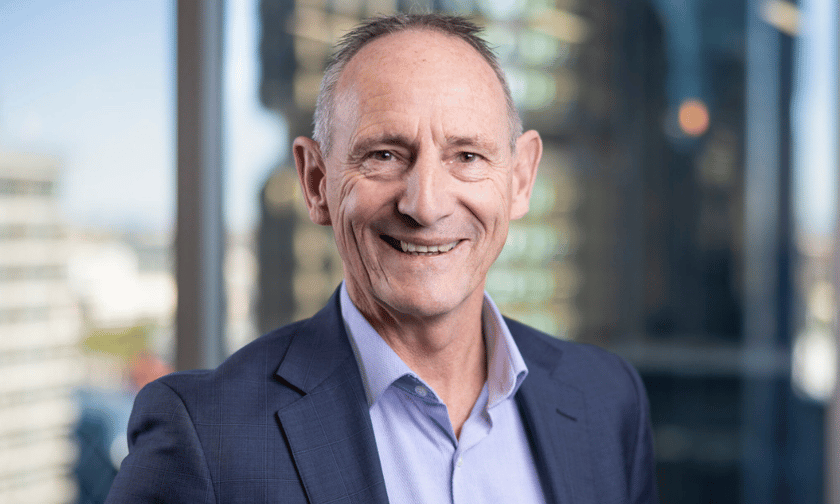

As small businesses climb out of the weeds of COVID-19 and tax debt, Resimac’s near prime lending solution offers a helping hand, providing the flexibility needed for businesses seeking greener pastures.
Over the past year, a remarkable 50% of the non-bank lender's settlements have stemmed from their near prime offerings, showcasing their unwavering commitment to supporting the critical self-employed business segment.
And according to Steve Wallace (pictured above), Resimac regional sales manager for Victoria, South Australia, Western Australia, Tasmania and Northern Territory, the future looks even brighter for brokers and their self-employed clients.
“Self-employed clients are our focus,” Wallace said. “The impact of the past three years, particularly COVID-19, has disproportionately affected their financial data. That's where we truly specialise, offering a seamless transition from fully verified loans to our near prime option.”
For brokers with clients that have unstable incomes, this flexibility is key.
“Our near-prime loans allow borrowers to secure good rates with alternative income verification, like BAS statements or accountant reports,” Wallace explained. “It's a bridge, not a dead end. Clients can eventually transition back to fully verified loans once their financials stabilise. ”
“At different points of the year, around 50% to 65% of our business have come through these near prime loans, and it’s because we lead the market right now from a rate and fees point of view.”
With the ATO chasing their tax debt clients in a more vigorous fashion, concerns about business tax liabilities are rising.
Insolvencies are also rising, with data from ASIC released on Tuesday showing that 727 businesses entered external administration or control in December last year, a 16% jump from the year before.
At the time of writing, 5,020 companies have collapsed so far in the 2023-2024 financial year, setting a trajectory for more than 10,000 by July — a figure that would eclipse the 2022-2023 total of 7,942, according to Smart Company.
A report by insolvency specialist firm Jirsch Sutherland showing many businesses could get pushed to the edge.
“The ATO debt level is still significantly higher than pre-pandemic levels, so pressure will continue to mount to bring that back to historical norms,” said Andre Spring, partner at Jirsch Sutherland.
However, Wallace said this was another scenario where Resimac could help struggling businesses.
“We can clear out and get rid of the ATO off their clients’ back and move them forward because they have something in place to make sure they don’t have a tax debt,” Wallace said.
“We can help with that framework as well. There’s a big group of policies and guidelines that help us assist that self-employed customer and that’ll also be a major focus throughout 2024. “
While the ASIC insolvency data was concerning, Wallace said he was generally optimistic for self-employed and small businesses throughout 2024.
“I feel that the latest data is just the tailwind of the past problems. Those that have gotten through the recent challenges are generally heading towards a pretty good space,” Wallace said.
“I’m an optimist. I see 2024 being a positive year. We are over the rate rises and maybe we’ll even see some rate reductions of the latter half of the calendar year.”
Wallace said many had “gotten through the worst of it” and businesses that had survived could look forward to a more stabilised economy as things started to flatten out.
“There’s likely growth coming around the corner soon enough.”
In the meantime, Wallace said Resimac could help businesses consolidate debts into one bucket, freeing up resources to invest in their future business growth.
“We offer a range of loan products for their business needs, leveraging their residential property as collateral when necessary. This flexibility allows us to tailor solutions to each client’s unique situation and support them comprehensively across the board,” Wallace said.
While Wallace was optimistic about 2024, he said there were some trends likely to push some business clients into near prime loan territory.
Firstly, the fixed rate mortgage cliff may not have eventuated as predicted throughout 2023, but Wallace said there were still pockets of the market struggling.
“I’ve had some family members in this position. It’s meant that adjusting spending habits and finding ways to supplement income might be necessary,” Wallace said. “For those struggling in 2024, non-bank lenders like us offer valuable options.”
Beyond fixed-rate customers, Wallace said another key segment that would continue to need specialist lending options in 2024: borrowers who don't meet traditional lending criteria because of factors like income sources (casual, contract, self-employment).
These borrowers may have good overall income but struggle with traditional verification due to job transitions.
“This near prime area will continue to be prominent in our 2024 lending due to the growing trend of non-traditional employment like contract work and self-employment,” Wallace said.
“These borrowers, with good income but unconventional income sources, often fall outside traditional lending requirements. We’re well-positioned to serve this growing segment with our flexible and adaptable loan options.”
